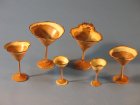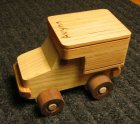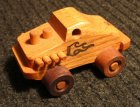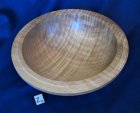I'm wondering what would be a good food grade finish for the small goblets I turned from pine? I used the search function here, but most of the threads were pretty old and I thought perhaps there was something new available.
Since these are Christmas related they may end up with whiskey / egg nog, etc. in them.
Should they be finished inside and out, or just outside?
What about using something like olive oil, is that a bad idea?
Does it make sense to use something like spar urethane on the bases to keep the bark intact?
Thanks in advance!
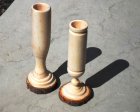
Since these are Christmas related they may end up with whiskey / egg nog, etc. in them.
Should they be finished inside and out, or just outside?
What about using something like olive oil, is that a bad idea?
Does it make sense to use something like spar urethane on the bases to keep the bark intact?
Thanks in advance!

Last edited:




